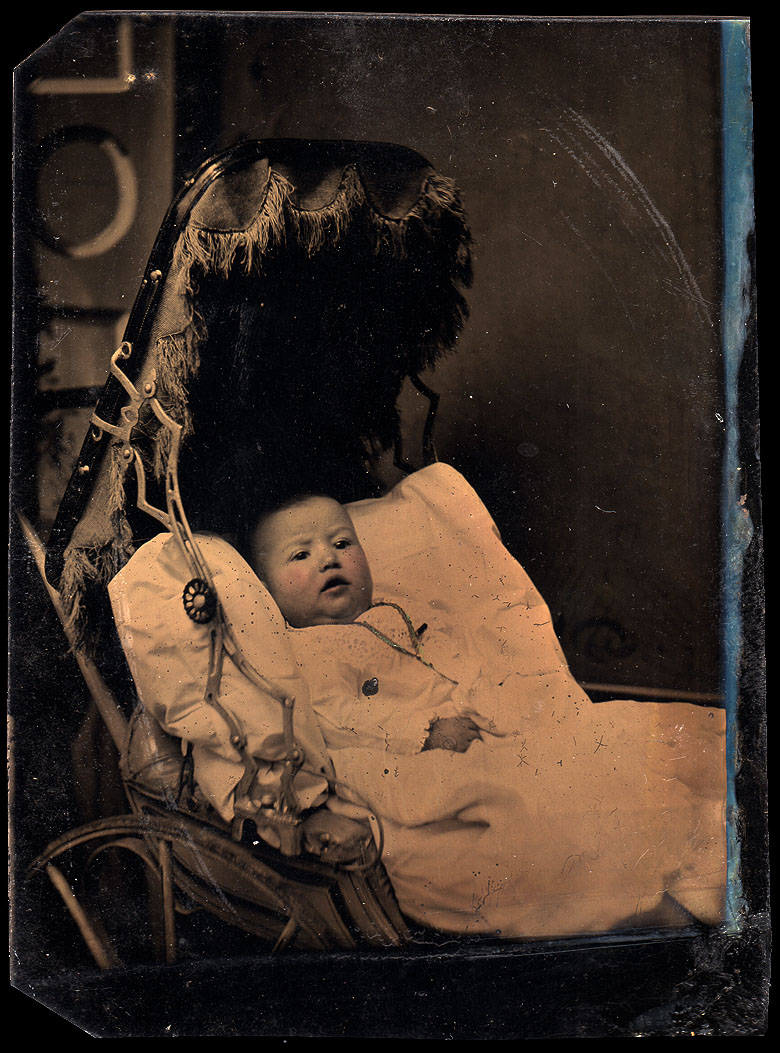A tintype of a baby in a baby carriage dating to around to the early to mid 1870’s.
Early baby carriages took on the form of miniature horse drawn carriages. During the early to mid 1870s they began to take on a distinct style of their own that eventually gave way to the ever so popular wicker type found in the latter part of the 19th century. This article from the American Agriculturist of 1875 gives us some insight into the early forms of baby carriages.
The Baby Carriage.
We can do very well without cradles for our babies. I don’t know as my children or myself have suffered for lack of one. But a baby-carriage seems indispensable. Without one, how can a child too young to walk get plenty of outdoor life? I wish that good baby-carriages were cheaper, so that every child might have the use of one. Some of the cheap carriages are so heavy, so hard to draw or push, that it is quite a task to use them. Many of the two-wheeled carriages come under this condemnation, but not all. There is a danger in the use of two-wheeled and three-wheeled coaches, which is avoided by the use of a carriage with four wheels–the danger of tipping over when the child leans too heavily forward, to one side, or when one presses upon one side of the handle ; but the fourwheeled coaches are expensive, and a careful nurse can get along well enough with either of the others, which is well made in other respects. It should be hung so as to give an easy motion to the child, and a light weight to the person moving it. The body should be so shaped that a young baby can lie straight in it easily, without getting humped shoulders. If the carriage is pushed from behind, it is difficult to keep good watch of the little one, unless the shade is adjustable like the umbrella, shades, and these do not afford the same protection from wind as the close old-fashioned covers.
2010-04-12

